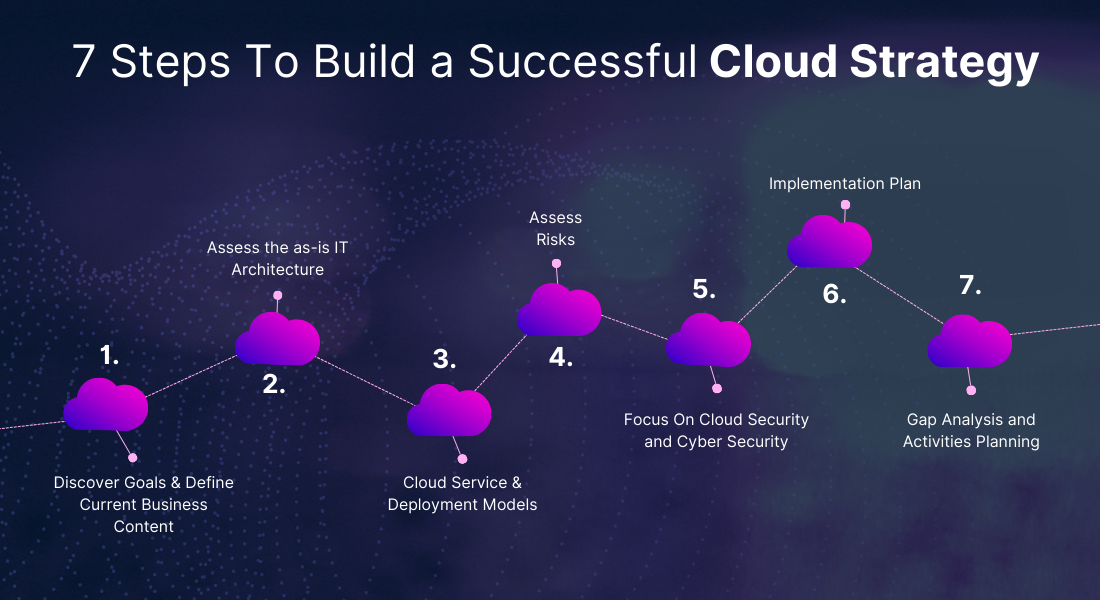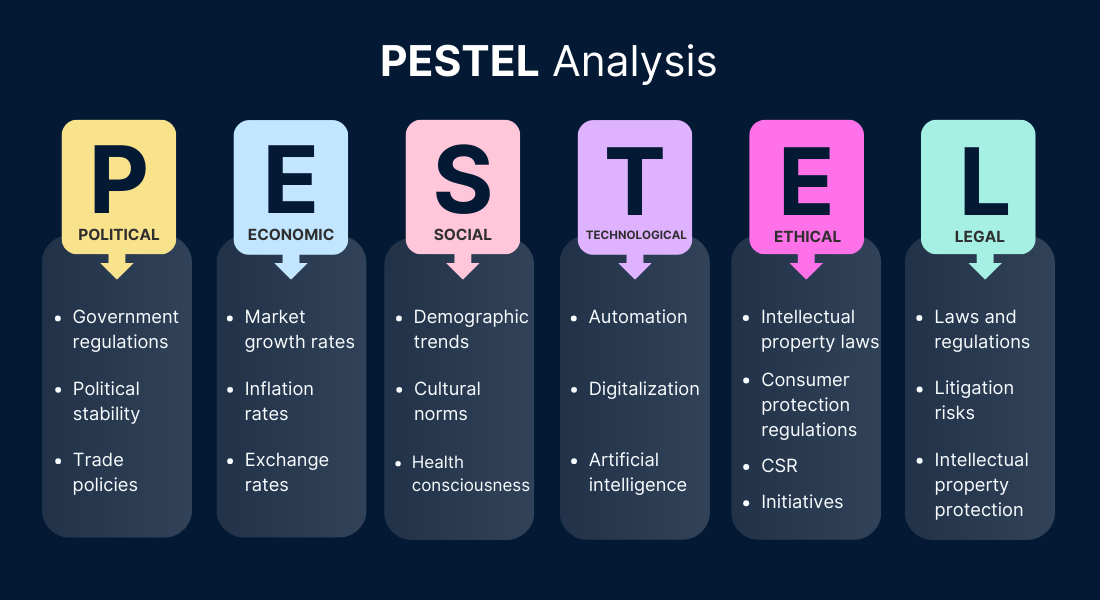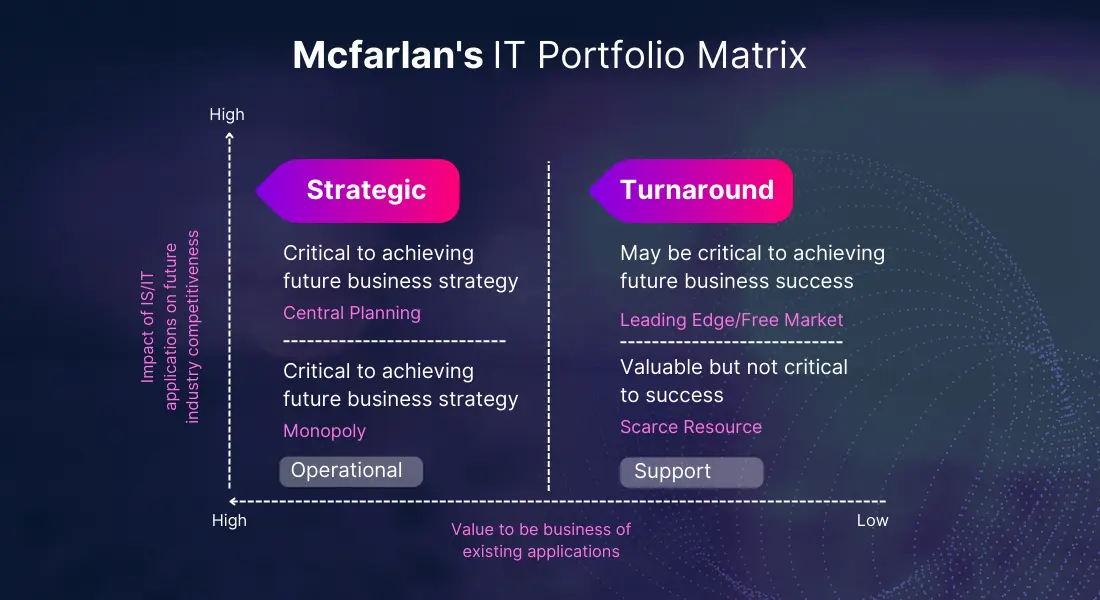Quick Summary
This blog provides crucial insights on Cloud Strategy, crafted explicitly for CTOs and CIOs in both startup and traditional business sectors. Aimed at those contemplating strategic decisions, it covers various strategy paradigms, their benefits, and effective solutions to address potential challenges. It highlights the need for a well-thought-out Cloud Computing Strategy in today’s business environment.
Table of Contents
Introduction
In the rapidly evolving landscape of modern business, a well-defined cloud strategy is no longer a luxury but a necessity. A solid cloud strategy is essential for organizations of any size to boost innovation, agility, and scalability.
Statistics reveal that 94% of enterprises seamlessly use cloud services, emphasizing the need for a robust plan. Thus, before adopting any new technological approach, it is crucial to concentrate on what you need and why you need it. This ensures that your tech choices match with your overall business goals. Also, a well-thought-out computing strategy becomes essential to avoid getting swept up in distractions and ensures your focus and resources are used effectively.
Thus, whether you’re an enterprise owner, CTO, or just beginning your cloud journey, this blog equips you with the knowledge to craft a successful cloud computing strategy.
What is Cloud Strategy?
A cloud strategy is a meticulously crafted plan outlining how an organization leverages cloud computing resources to achieve its objectives. It functions as a roadmap, directing decisions, investments, and activities associated with adopting and using cloud services.
“Organizations that do not have a high-level cloud strategy driven by their business strategy will significantly increase their risk of failure and wasted investment.”
– David Cearley, Vice President and Gartner Fellow
Thus, a good cloud plan is crucial for businesses of any size, helping them navigate the move to cloud computing and meet different solution needs. The plan is based on six main principles: trust, enablement, enterprise risk, capability, cost-benefit, and accountability. These principles form the basis for using cloud computing strategies in public, private, hybrid, and multi-cloud setups. The objective is to enable organizations to effectively leverage the advantages of cloud computing while minimizing the risk of expensive errors.
Importance of Cloud Strategy for Modern Businesses
Here are the compelling reasons why cloud computing strategy is necessary for modern businesses.
🟠 Fueling Agility and Innovation
Modern businesses must swiftly adapt to market changes. A well-planned strategy allows organizations to adjust resource levels, promoting agility flexibly. Moreover, they provide access to a wealth of cloud-native tools and services, driving innovation and speeding up time-to-market for your new products and services.
🟠 Driving Cost Efficiency
Cloud computing allows businesses to pay only for resources, eliminating the need for large upfront capital investments. An effective cloud strategy assists in managing expenses through optimized resource allocation, reducing waste, and leveraging the cloud service providers’ cost-efficient pricing models, thereby facilitating cloud cost optimization.
🟠 Enabling Scalability for Strategic Alignment
A cloud-native strategy aligns with your goals and vision, guiding how different cloud environments contribute to your future. It also ensures seamless scalability, allowing your IT infrastructure to adapt flexibly to changing business demands and handle varying workloads effectively.
🟠 Disaster Recovery and Business Continuity
Cloud solutions provide robust disaster recovery solutions in AWS, Azure, and GCP, alongwith robust business continuity features. You can safeguard your data and applications with a well-defined cloud strategy, minimizing downtime in the face of unexpected disruptions.
You May Also like to Read: Disaster Recovery in Azure
🟠 Expanding Reach with Global Accessibility
The cloud removes geographical limitations, allowing businesses to expand their influence and cater to global customers. A worldwide presence is vital for contemporary enterprises seeking new markets and customer demographics.
Benefits of Cloud Strategy
Let’s take a look at the significant benefits of cloud computing strategy:
🟠 Customized Cloud Adoption Planning
A tailored cloud adoption strategy acknowledges the unique needs of your business, ensuring optimized investments. It lays the foundation for optimizing cloud investments and determining whether engaging a managed service provider (MSP) is beneficial.
🟠 Strengthened Security Measures
Effective cloud strategies prioritize security, mitigating risks associated with dispersed data. Businesses can build customer trust and protect sensitive information by emphasizing security measures.
🟠 Strategic Technology Investment
A well-defined cloud strategy enables organizations to anticipate future technology investments. Businesses can accurately estimate future costs by forecasting expenses related to storage, computing power, and bandwidth.
🟠 Adaptive Technology Integration and Modernization
A smart cloud strategy allows for adaptable service customization as business needs evolve. By identifying current and future service requirements, organizations can empower their DevOps teams with the necessary tools for enhanced business value.
Types Of Cloud Strategy
When considering the cloud computing strategy, you have options that should align with your business needs and growth potential. Let’s break down four main types:
Single Public Cloud:
🔸Get all your services from one cloud provider.
🔸Pay-as-you-go for computing, storage, and software.
🔸Suitable if you want to stick with legacy software and focus on core business functions.
Single Private Cloud:
🔸Keep everything in the cloud exclusively for your business.
🔸Use a data center provided by an on-premise cloud provider.
🔸Ideal for those prioritizing data security and hesitant about moving their data.
Hybrid Cloud:
🔸Blend public and private clouds.
🔸Host some applications on-site and others in the public cloud.
Multi-Public Cloud:
🔸Make use of diverse cloud service models offered by multiple cloud providers.
A widely favored option for a smooth cloud experience.
Selecting the right cloud computing strategy is about finding what suits your business requirements.
7 Steps To Build a Successful Cloud Strategy
Developing a cloud computing strategy that aligns with your organization’s goals and ensures success involves six essential steps.

Discover Goals and Define Current Business Content
To make the most of the cloud and align your data strategy with business goals, ask yourself:
- What do you aim to achieve through cloud adoption?
- Is it about improving customer experiences and reducing operational costs?
- Is it staying ahead of competitors with innovative products and services?
Once goals are clear, plan IT capabilities accordingly, considering workload migration, cloud-native technologies, and automation to align with overarching business objectives. Next is to analyze the current business context to set the direction and define cloud needs based on the cloud computing strategy. It includes:
- Brainstorming Sessions: Involve stakeholders and IT specialists to evaluate the impact of cloud adoption.
- SWOT Analysis for Cloud Strategy: Create a matrix of cloud deployment models aligned with business needs. You can evaluate current information systems to leverage strengths and opportunities while addressing weaknesses and threats.
- Value Chain Analysis: Identify primary activities that create customer value and assess how cloud adoption improves efficiency.
- PESTEL Framework: As illustrated in the image below, the PESTEL framework helps understand the external factors that impact an organization.

Assess the as-is IT Architecture
Assessing the current IT architecture is essential for crafting an effective cloud computing strategy. This analysis should cover technical and business dimensions to optimize for cloud implementation. It evaluates IT structure, applications, infrastructure, data policies, metrics, and objectives.
The McFarlan IT portfolio grid helps assess the strategic impact of IT applications, like cloud services, on both current and future industry competitiveness. Based on this evaluation, it categorizes all existing company infrastructure.

The matrix has two axes:
- Impact on industry competitiveness: This axis measures how well an application boosts competition for the company
- Business Value: This axis measures the importance of an application to the business’s day-to-day operations.
The grid is grouped into four quadrants :
1. Strategic: High Impact on Industry Competitiveness and High Business Value:
- These applications are vital for business operations and provide a significant competitive advantage.
- Examples include CRM and ERP systems.
2. Operational: High Impact on Industry Competitiveness but Low Business Value
- While not essential for day-to-day operations, these applications offer a competitive edge.
- Examples include supply chain management or manufacturing execution systems.
3. Turnaround: Low Impact on Industry Competitiveness but High Business
- These applications are essential for daily business operations but don’t necessarily provide a competitive advantage.
- Examples include accounting and order processing systems.
4. Support: Low Impact on Industry Competitiveness and Low Business Value
- These applications are neither crucial for daily operations nor offer a competitive advantage.
- Examples include email and web browsers.
Businesses can use this to decide which IT applications to invest in, maintain, or retire and align their IT strategy with their business strategy.
Plan Your Business Operations with a Strategic Cloud Approach
Supercharge with our Cloud Consulting Services and redefine success today!
Cloud Service And Deployment Models
To develop a successful cloud strategy, begin by defining your digital transformation goals and considering future technologies such as generative AI, blockchain, and quantum computing. Evaluate cloud providers based on their strengths and cultural fit, considering factors like AWS’s broad capabilities, Google Cloud’s expertise in machine learning, and Azure’s integration with Microsoft 365.
Factor in cost, vendor lock-in, and technical skills alignment, and consider adopting a multi-cloud approach to match providers with specific workloads. Architect for portability to reduce vendor lock-in risks and prioritize long-term innovation, growth, and partnerships over basic features.
Assess Risks
A cloud strategy that considers risks is essential for achieving successful business outcomes. Conducting a risk assessment helps identify potential issues and develop mitigation strategies. Here’s how to evaluate risks:
- Identification: Based on past experiences, identify potential risks and categorize them into delivery risks, which impact successful implementation (e.g., technical challenges, delays, cloud performance), and benefits risks, which affect business outcomes (e.g., market changes, competition, regulatory shifts).
- Prioritization: Determine the likelihood of each risk and prioritize them accordingly.
- Quantification: Utilize a probability-impact matrix to quantify the components of each risk.
- Action Plan: Develop a proactive plan of action to mitigate the identified risks effectively.
Use the risk assessment matrix to identify and prioritize risks based on likelihood and impact. This tool aids organizations in decision-making, cloud resource management, and tracking risk mitigation progress, enhancing overall.
Focus On Cloud Security and Cyber Security
To strengthen cloud security, implement centralized identity and access management, multi-factor authentication, and role-based access controls. Apply encryption and tokenization for data protection and conduct thorough security reviews before migrating workloads to the public cloud. Integrate security into application design using DevSecOps and infrastructure as code. Develop robust incident response plans and disaster recovery provisions tailored to cloud environments. Maintain ongoing security posture management and compliance auditing.
Implementation Plan
To effectively execute our cloud strategy, we will thoroughly evaluate project dependencies, costs, and anticipated benefits. Key milestones within this implementation plan include establishing a robust management framework, meticulously planning resource allocation, prioritizing projects based on strategic objectives, defining and instilling best practices for cloud utilization, instituting governance measures to ensure compliance and security, and remaining agile to adjust our cloud strategy as necessary based on ongoing resource assessments. Customization of our approach will be paramount, ensuring alignment with our unique business context and overarching digital transformation goals.
Gap Analysis and Activities Planning
Gap analysis ensures a smooth transition to the cloud by identifying and addressing gaps and dependencies in proposed solutions. It involves:
- Identifying opportunities for streamlining IT workflows.
- Determining priority for necessary technological advancements.
- Creating a plan to address challenges identified during the evaluation.
Utilizing Fit-Gap analysis, the focus is on iterative assessments to identify priorities and ensure the proposed cloud solution addresses every gap. It helps build a clear transition plan. After the gap analysis, stakeholders refine the scope of the implementation priorities and develop the final implementation plan with relevant deliverables.
Cloud Strategy For A Startup
For startups, focusing on product development and delivering user value is paramount. Speed is crucial for market success, necessitating efficiency and prioritization of tasks that directly contribute to business goals.
The strategy entails working smartly and minimizing time spent on non-essential tasks. Leveraging cloud managed services is key to cost savings and streamlined operations. Opting for serverless services over server management, utilizing containers and Kubernetes for system deployment, and selecting managed database solutions like AWS RDS or Snowflake enhance simplicity and speed. By adopting these alternatives, startups can accelerate growth and better serve their customer base.
Cloud Strategy For Traditional/On-Premise Business
For a traditional company not yet using the cloud, check if your existing product is profitable, functional, and doesn’t need many changes. If it’s making a profit, you might stick with your current setup and only consider the cloud for new projects. However, if managing your own systems becomes a burden due to the need for constant innovation or competitive pressure, moving to the cloud makes sense.
Remember that moving to the cloud might not be cheaper initially. It could even be a bit more expensive before you see benefits.
Here’s a simple three-step process for traditional businesses transitioning to the cloud:
- Lift and Shift (Rehost): Start by moving what you have in your data center to the cloud. It’s quick but can be costly. Avoid trying to maintain a product in both your data center and the cloud; commit to the cloud for stability.
- Rapid Iteration: Once transitioned to the cloud, prioritize iterative processes. Identify expensive features, products, or unit costs, as what was cost-effective in your data center may not be the same in the cloud. Utilize tools that offer a business-contextual understanding of your cloud expenses.
- Embrace Elasticity and Flexibility: As you become cloud-native, consider using managed and cloud services for speed. Embrace a mindset of elasticity and adaptability, enabling your systems and expenses to adjust dynamically in response to customer demand. Aim for efficiency by aligning customer activity, system activity, and costs.
Let’s understand this with an illustration:
Let’s consider a situation where you have an old computer program that handles online orders for a retail store and want to move it to the cloud. Once you decide to make this shift, your plan should look like this:
1. Move to the cloud for a more efficient setup utilizing various Cloud migration tools.
2. Continuously update to be more efficient.
3. Combine the development and operations teams, ensuring it runs smoothly for a seamless process.
4. Prepare to incorporate new cloud tools and features as you become accustomed to utilizing the cloud.
Now, it’s crucial to think about how these changes can give your retail store an edge:
- Increase Profits: Lower the cost of processing orders to boost profits.
- Faster Feature Delivery: Roll out new features for online ordering quicker than competitors.
- Innovative Use of Cloud Services: Use cloud tools efficiently to provide better services than competitors.
Challenges In Executing an Effective Cloud Strategy
Let’s look at the challenges that might hinder your execution of an effective cloud strategy.
1. Ensuring Data Security and Compliance
Shifting to the cloud always involves compliance uncertainties, regardless of precautions. It’s not only a concern for the risk of data breaches; it also affects the potential consequences if the company hosting your data shuts down or is acquired by another business with different security standards.
For instance, if you use commercial cloud providers like Amazon, they demand unique security measures, including Hardware Security Module (HSM)-based key management, encryption, and adherence to strict government standards like SOC 2, PCI, and HIPAA.
2. Navigating Cultural and Procedural Shifts
Transitioning to the cloud requires a significant cultural and process shift within IT departments, including adapting to evolving needs and moving away from traditional detailed planning.
To tackle this issue, foster a culture of agility and adaptability within the IT team. Implement agile methodologies and DevOps practices to facilitate rapid iteration and deployment. Provide training and support to help employees adjust to the new working method.
3. Determining the Servers for Migration or On-premise Retention
To determine which services should migrate to the cloud and which should remain on-premise, it’s essential to pose these questions to yourself.
- Is the application’s demand predictable or unpredictable?
Opt for cloud hosting if unpredictable; otherwise, keep it on-premises. - Does the application require access during business hours?
If constant access is necessary, consider on-premise hosting instead of the cloud. - Do you possess data vital for the application that must be on-premises?
If so, keep the application on-premises and offload the data to the cloud.
4. Addressing IT staffing and Talent Scarcity
If you face difficulties attracting and retaining top IT talent, transitioning your IT operations to the cloud may not be wise. Cloud migration demands a new skill set and expertise from your IT team. If your team is already overburdened and cannot handle the transition, postponing until they have the bandwidth to take on additional responsibilities is prudent. Waiting allows you to leverage the cost benefits of hosted services and products once your team is ready for the transition.
5. Network Infrastructure Challenges
Shifting to the cloud can necessitate substantial network changes. You might have to upgrade both hardware and software to handle the increased demand for cloud services. Outdated network architecture may not support cloud demands, requiring significant investments in new resources. Failure to make these changes before migration can lead to capacity issues with your hosted services.
Conclusion
Crafting an effective cloud strategy requires careful consideration of various factors, including business objectives, technical feasibility, and cost management. By clearly defining goals for cloud adoption and prioritizing cost-effective approaches, organizations can leverage the cloud to drive innovation, scalability, and competitive advantage. Additionally, continuous monitoring and adjustment of the strategy based on evolving business needs and technological advancements are essential for long-term success in the dynamic cloud environment. However, it is always advisable to hire cloud developers to ensure your cloud solutions’ successful implementation and maintenance.
Your Success Is Guaranteed !
We accelerate the release of digital product and guaranteed their success
We Use Slack, Jira & GitHub for Accurate Deployment and Effective Communication.




